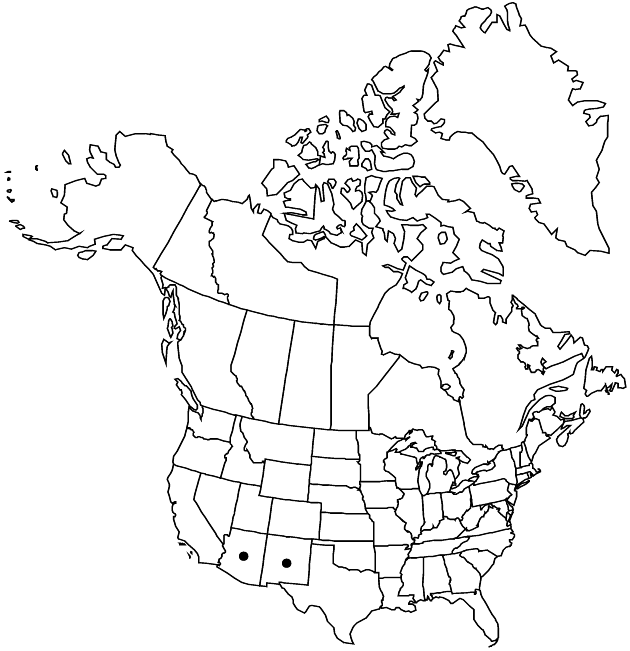Difference between revisions of "Perityle coronopifolia"
Smithsonian Contr. Knowl. 5(6): 82. 1853.
FNA>Volume Importer |
imported>Volume Importer |
||
| (2 intermediate revisions by 2 users not shown) | |||
| Line 51: | Line 51: | ||
|publication year=1853 | |publication year=1853 | ||
|special status= | |special status= | ||
| − | |source xml=https:// | + | |source xml=https://bitbucket.org/aafc-mbb/fna-data-curation/src/2e0870ddd59836b60bcf96646a41e87ea5a5943a/coarse_grained_fna_xml/V19-20-21/V21_799.xml |
|tribe=Asteraceae tribe Heliantheae | |tribe=Asteraceae tribe Heliantheae | ||
|subtribe=Asteraceae (tribe Heliantheae) subtribe Peritylinae | |subtribe=Asteraceae (tribe Heliantheae) subtribe Peritylinae | ||
Latest revision as of 20:14, 5 November 2020
Subshrubs, 6–36 cm (in rock crevices, stems relatively many, erect or pendulous, very leafy); sparsely to densely grayish hairy. Leaves: petioles 2–8(–12) mm; blades pedately 3-lobed (lobes spatulate or linear), or 2–3-pinnatifid (lobes linear-filiform), 4–30 × 4–20 mm, ultimate margins entire. Heads (2–5) in corymbiform arrays, 5–6.5 × 5–6 mm. Peduncles 7–15 mm. Involucres campanulate. Phyllaries 2–16, linear-lanceolate to narrow-ovate, 3.5–5 × 0.5–1.5 mm. Ray florets 8–12; corollas white, laminae broadly oblong or oblong-elliptic to subspatulate, 3–7 × 2–3 mm. Disc florets 30–40; corollas yellow, often purple tinged, tubes 0.8–1 mm, throats tubular, tubular-funnelform, or tubular-campanulate, 1–1.3 mm, lobes 0.3–0.4 mm. Cypselae linear-oblong to narrowly oblanceolate, 1.8–2.5 mm, margins usually prominently calloused, sometimes thin, usually ciliate; pappi of 2(–3+) barbellulate bristles 1.5–2.5 mm plus crowns of hyaline, laciniate scales. 2n = 34.
Phenology: Flowering spring–fall.
Habitat: Rock and cliff faces
Elevation: 1000–2600 m
Distribution

Ariz., N.Mex., Mexico (Chihuahua).
Discussion
Perityle coronopifolia is widespread in south-central and southeastern Arizona, and southwestern and south-central New Mexico. The combination of white rays, often pinnatifid leaves, and perennial habit distinguish it.
Selected References
None.